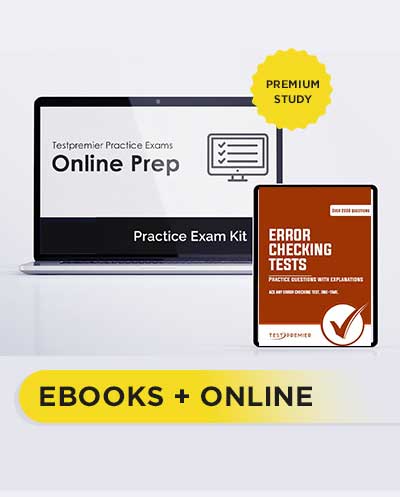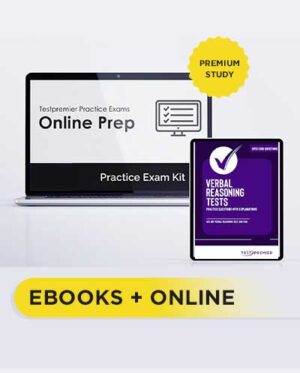Strengthen your practice for the Error Checking Assessment Test with our updated Error Checking Assessment Practice Test Pack, which covers all the sections on the actual exams. This book provides valuable insights into what to expect and will be of great help in helping you develop effective study strategies. Kick off your preparation with our Error Checking Assessment Practice Test
With detailed step-by-step explanations on every question, and hints on how to solve them faster.
About Error Checking Assessment Practice Test
An error-checking test is an aptitude test that evaluates a candidate’s ability to spot erros in a set of data or text. The typical questions that arise during these assessments require an effective comparison of correct information alongside an adapted version of the original text.
The original and copied versions will appear to be very similar. However, in the altered text, some items have been transposed or swapped with other parts of the transcript. The aim is to carefully identify the statements that have been written correctly, those that have been altered, and the nature of the alteration itself. The texts provided will normally contain alphabetical and numerical characters in order to allow for an assessment of both fields and have a time limit for completion of questions.
What to expect:
Most of the questions on an error-checking test are designed to evaluate candidate’s basic grammar and punctuation skills, as well as his/her data-entry and formatting abilities. However, different tests may include different question types. Some may ask you to identify errors in a sentence, while others may require you to correct mistakes in a table or spreadsheet.
Others may ask you to verify the accuracy of information entered into a form. No matter what the specific questions are, though, the goal is always to assess your ability to detect and correct errors quickly and accurately.
Sample Error Checking Assessment Test Past Questions and Answers

B) 11456789
C) 11546789
D) 11456879
E) 11546879

B) Activity
C) Inactive
D) Inactivity
E) Inacvite

B) s6R
C) R2t
D) RRC
E) RrC

B) Helois Incorporated
C) Helois Insights
D) Helois Industries
E) Helios Incorporated
Question 5:
You receive an email from a colleague with several spelling and grammatical errors. How would you respond?
A) Politely point out the errors and offer to proofread future emails.
B) Ignore the errors; it’s not your concern.
C) Forward the email to the colleague’s supervisor.
D) Reply to the email without mentioning the errors.
Answer: A) Politely point out the errors and offer to proofread future emails.
Question 6:
You’re proofreading a contract, and you find a clause that contradicts a previous section. What would you do?
A) Assume it’s a legal technicality and leave it as is.
B) Correct the contradiction and make a note for the legal team.
C) Highlight the issue but take no further action.
D) Ignore the contradiction; it’s not significant.
Answer: B) Correct the contradiction and make a note for the legal team.
Question 7:
You’re proofreading a document, and you notice a sentence with a grammatical error. What should you do?
A) Ignore the error; it’s not significant.
B) Correct the error and make a note for the author.
C) Highlight the error but take no further action.
D) Rewrite the entire paragraph to avoid the error.
Answer: B) Correct the error and make a note for the author.
Question 8:
You’re reviewing a marketing brochure before it goes to print, and you notice that a product price listed is incorrect. What is the most critical action to take?
A) Assume it’s a deliberate marketing strategy and leave it as is.
B) Correct the error and inform the marketing team.
C) Highlight the error but take no further action.
D) Remove the price altogether to avoid confusion.
Answer: B) Correct the error and inform the marketing team.
Question 9:
You’re reviewing a spreadsheet, and you notice that a formula in one of the cells is incorrect, resulting in inaccurate calculations. What is your next step?
A) Assume it’s a minor error and leave it as is.
B) Correct the formula to ensure accurate calculations.
C) Highlight the cell with the error and take no further action.
D) Delete the entire spreadsheet and start over.
Answer: B) Correct the formula to ensure accurate calculations.
Question 10:
You’re responsible for reviewing a series of financial transactions, and you notice a discrepancy between the records and the bank statement. What is the most critical action to take?
A) Assume it’s a one-time error and ignore it.
B) Investigate the discrepancy and reconcile the records with the bank statement.
C) Highlight the discrepancy and take no further action.
D) Report the issue to a coworker to handle.
Answer: B) Investigate the discrepancy and reconcile the records with the bank statement.








Reviews
There are no reviews yet.